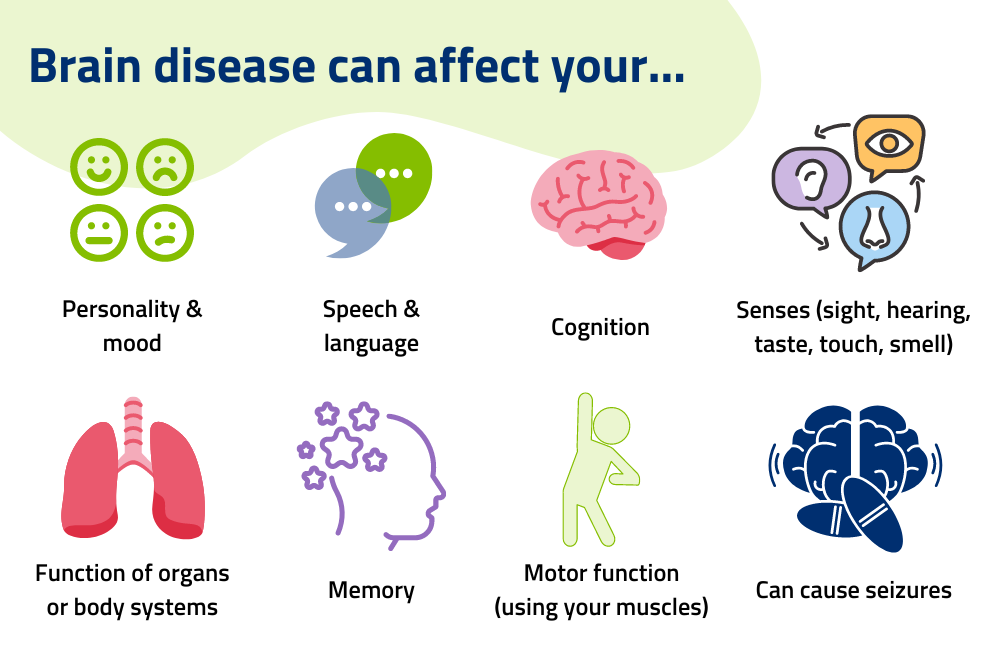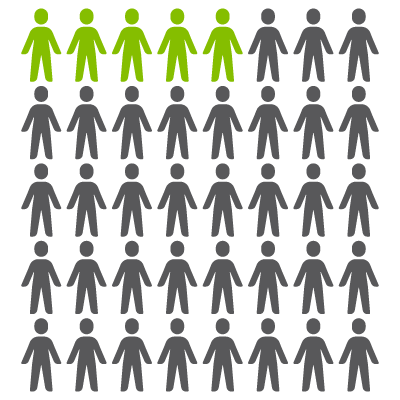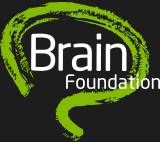| Neurodegenerative disease | Neurodegenerative disease is a broad category including any condition in which neurons lose function and eventually die. This category encompasses movement disorders (such as Parkinson’s disease), neuromuscular disorders, and most types of dementia. The clinical presentation depends on which neurons are first affected, e.g., motor neurons in motor neurone disease; neurons in the “substantia nigra” in Parkinson’s disease. | Motor neurone disease
Amyotrophic lateral sclerosis |
| Dementias | Neurodegenerative diseases affecting higher cortical function and causing the loss of cognitive function to the point that it interferes with daily life. It affects skills such as memory, problem-solving, language, and other thinking abilities. | Alzheimer’s disease
Fronto-temporal dementia
Lewy body disease |
| Movement disorders | Brain disorders that impair your ability to move in some way. A movement disorder could impair your voluntary movements (hypermobility, reduced, or slowed movement) or cause involuntary movements. | Parkinson’s disease
Dystonia
Huntington’s disease |
| Neuromuscular disorders | Disorders that affect your muscles, the nerves that control them, and communication between your nerves and muscles. Symptoms vary depending on the severity of the disease but can range from numbness (with involvement of sensory nerve fibre) to muscle weakness and wasting (with involvement of motor nerve fibres or muscle). | Muscular dystrophies
Peripheral neuropathy
Charcot-Marie-Tooth disorder |
| Brain tumours | Brain tumours may involve growths of brain tissue or secondary deposits that have spread to the brain from cancer elsewhere in the body. Primary brain tumours may be benign, as in a meningioma and acoustic neuroma, or malignant as in many forms of glioma). There are many types of brain tumours which vary in cause and severity. | Gliomas
Meningiomas
Acoustic Neuroma |
| Cerebrovascular disease | Conditions that affect blood flow or the blood vessels in your brain. These diseases can cause clots or ruptured blood vessels, which can result in brain damage or stroke. | Stroke
Aneurysm
Arteriovenous malformations (AVM) |
| Concussion & traumatic brain injury (TBI) | Injury caused by external forces, such as falls, car crashes, sports injuries, or domestic violence incidents. TBIs vary in severity from concussion (‘bruising’ of the brain) to bleeding in the brain or coma. | Concussion
Traumatic Brain Injury |
| Epilepsy | A long-term neurological disorder in which groups of neurons become spontaneously active, leading to seizures or ‘fits’. A seizure can affect your consciousness and can cause convulsions or involuntary movements. | Epilepsy |
| Migraine & headache disorders | Headache can be a symptom of an underlying medical condition, but headache disorders (or primary headache) more commonly occur without a significant underlying abnormality of the brain. Some headache disorders can significantly impact a person’s quality of life. | Migraine
Tension-type headache
Cluster headache |
| Infections | Neurological infections occur when viruses or bacteria get into your brain or spinal cord. Meningitis is the infection of the outer covering of your brain and spinal cord, and encephalitis is the infection of the brain itself. | Meningitis
Encephalitis |
| Inflammatory diseases | Neuroinflammatory diseases happen when the immune system misfires and attacks healthy cells. This can occur in various parts of the central nervous system, including the brain, spinal cord, optic nerves (e.g., MS, transverse myelitis), peripheral nerve (Guillain-Barré syndrome), and neuromuscular junction (e.g., myasthenia gravis). | Multiple Sclerosis
Transverse Myelitis
Guillain-Barré syndrome |
| Paediatric neurology | Paediatric neurology is the study of brain diseases, disorders, and injuries in children and adolescents. These conditions could also fall into other categories, but the causes, symptoms and treatments are often different for children. | Cerebral palsy
Autism
Dyslexia |





 The Brain Foundation is the largest, independent funder of brain and spinal injury research in Australia. We believe research is the pathway to recovery.
The Brain Foundation is the largest, independent funder of brain and spinal injury research in Australia. We believe research is the pathway to recovery.